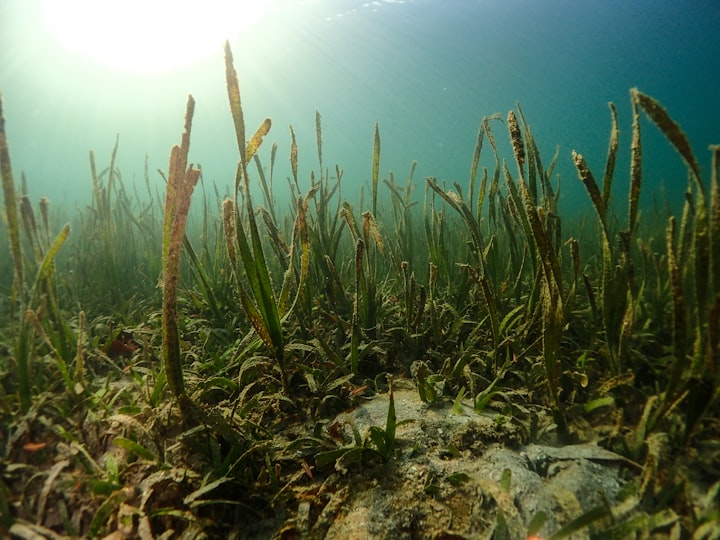The Honey Mushroom
Exploring the World's Largest Living Organism

Did you know that the world's largest living organism is not an elephant, a blue whale, or even a giant redwood tree? It's a fungus! The Armillaria ostoyae, commonly known as the "honey mushroom," holds the title of being the world's largest living organism.
The honey mushroom is a type of parasitic fungus that lives underground, typically in coniferous forests in the western United States and Canada. It grows by spreading its mycelium, or fungal threads, throughout the soil, feeding on decaying organic matter and tree roots. While the individual mushrooms that we typically see above ground are relatively small, the network of mycelium that they stem from can be massive.
So just how big is the honey mushroom? Well, estimates vary, but some researchers believe that it covers an area of over 2,200 acres (8.9 square kilometers) in eastern Oregon's Blue Mountains. To put that into perspective, that's roughly the size of 1,600 football fields! And it's not just its size that's impressive - some individual clusters of honey mushrooms within this massive network can weigh up to several tons.
While the honey mushroom may be fascinating from a biological perspective, it can also have a significant impact on its surrounding ecosystem. Its parasitic nature means that it can cause damage to the trees that it feeds on, potentially leading to their death. Additionally, because the honey mushroom is so good at decomposing organic matter, it can have a major effect on nutrient cycling in the soil, potentially altering the balance of the entire forest ecosystem.
Despite the potential downsides, the honey mushroom is a crucial player in many forest ecosystems, helping to break down dead plant matter and recycle nutrients. And while it may not be as glamorous as some of the more well-known contenders for the title of "world's largest organism," its vast network of mycelium serves as a reminder of the incredible diversity and complexity of life on our planet.
The discovery of the honey mushroom's massive size was a surprise to researchers, as it was previously thought that individual mushroom clusters were separate organisms. However, genetic testing has revealed that they are all part of the same organism, connected by an extensive network of mycelium. The honey mushroom is just one example of a class of fungi known as "mycorrhizae," which form symbiotic relationships with plants and help them to absorb nutrients from the soil.

The honey mushroom's massive size and ability to decompose organic matter have also made it of interest to scientists studying bioremediation. Bioremediation is the use of living organisms to break down pollutants and other harmful substances in the environment. Some researchers believe that the honey mushroom's ability to break down complex organic compounds could make it a useful tool for cleaning up contaminated soil.
Despite its many intriguing qualities, the honey mushroom is not without its challenges. Its parasitic nature means that it can cause significant damage to trees, which can have ripple effects throughout the ecosystem. Additionally, its rapid growth and ability to outcompete other fungi can make it a nuisance for farmers and gardeners.
However, for those who appreciate the complexities and wonders of the natural world, the honey mushroom serves as a testament to the power and resilience of life. Its vast underground network, spanning acres and even miles, reminds us that there is always more to discover and explore, even in the most seemingly familiar places. And who knows - there may be other massive living organisms out there, waiting to be discovered and appreciated for the remarkable wonders that they are.
The honey mushroom's incredible size has also led to some interesting cultural and historical significance. In Japan, the honey mushroom is known as "matsutake," and it is a prized ingredient in traditional cuisine. Matsutake hunting has become a popular pastime in some regions, with hunters scouring the forests for the elusive mushrooms. The honey mushroom has also been used in traditional medicine, with some cultures believing that it has healing properties.
In addition to its cultural significance, the honey mushroom has played an important role in shaping the ecosystems of North American forests. As a decomposer, it helps to break down dead plant matter and recycle nutrients, making it an essential part of the forest ecosystem. Its parasitic nature means that it can also play a role in controlling populations of certain tree species.
The honey mushroom's massive size and intricate underground network have made it a subject of fascination for scientists and laypeople alike. Its ability to survive and thrive in even the harshest conditions is a testament to the resilience of life on our planet. And while the honey mushroom may not be the flashiest or most charismatic of organisms, it serves as a reminder of the incredible diversity and complexity of the natural world, and the wonders that can be found even beneath our feet.
In conclusion, the honey mushroom, or Armillaria ostoyae, is the world's largest living organism, with a vast network of mycelium that spans over 2,200 acres in some regions of North America. While its parasitic nature can be detrimental to trees, it plays an essential role in the ecosystem as a decomposer and nutrient recycler. The honey mushroom's cultural significance, potential applications in bioremediation, and ability to thrive in harsh conditions make it a fascinating subject of study and a reminder of the incredible diversity of life on our planet.
Thanks a lot for reading! Kindly, do well to like it as well!
About the Creator
Derick Okwa
I am a fun and easing going guy who loves nature and the beautiful creatures inhabiting the earth with us. More reason I write articles about them.






Comments
There are no comments for this story
Be the first to respond and start the conversation.